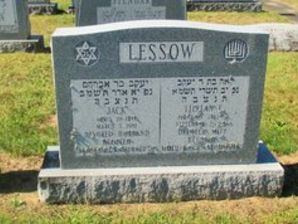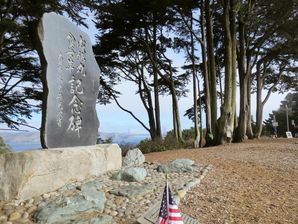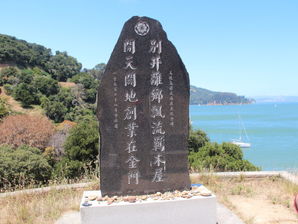Memorials and Language: Connection to Migration Origins
While people typically will come to America to create a new life for themselves, monuments will usually have language representing their ethnic group or origins as to depict their story and who they are. An example, would be Jewish immigrants whose graves usually have Hebrew letters to represent their origins. In this way memorials truly show the life journey of someone who is traveling to the United States.
Immigration memorials are vital for remembering the origins of the people and expressing their life stories. However, often times it is more powerful to display symbols that represent the memory of the immigration.
In the Memorial, "Memorial of Jack and Lillian Lessow", there are several sentences written in Hebrew in order to represent the Jewish Heritage. With just these letters alone, visitors will instantly recognize that the couple is Jewish. They will know how they used to spend Friday nights, what their wedding was like, and what foods they were or were not allowed to eat. When taking this into account, it can be seen how powerful the language is when placed on a memorial.
Another example of a memorial that uses language as a powerful tool is a dedication in San Francisco. This memorial, which is located in the famous Lincoln Park has a very simple design and unlike others of its kind, it lacks symbols and images that represent the meaning and its purpose. While it is very difficult to determin that the statue represents a Japanese warship's arrival in San Francisco, the letters on the stone can identify the Japanese origin which, with a knowledge of history, can determine the history of its purpose and why the Japanese-origin monument would be in California.
The final example as the last hails from San Francisco. This example, has a similar design to the one in Lincoln Park as it is very simplistic and relies on the language to tell the story of the migrants. In this monument, located in Angel's Island near San Francisco, the language can be identified as Chinese. When this discovery is made it can be determined, after research, that this represents the Chinese migration to Northern California. The language shows the culture and heritage of the migrants and what there life could have been like as they traveled to California.
Works Cited
Horikoshi, Toyohiro. “San Francisco Japanese-Americans Ask Why City Needs a 'Comfort Women' Memorial.” The Japan Times, www.japantimes.co.jp/news/2015/11/03/national/politics-diplomacy/san-fra....
“Lillian F Lessow (1904-1980) - Find A Grave...” Find A Grave, www.findagrave.com/memorial/170405296/lillian-f-lessow.
Nauman, Russell. “Reconstruct and Illuminate: Advancing the Storytelling of Angel Island: Angel Island Immigration Station - San Francisco.” AIISF, AIISF, 17 June 2019, www.aiisf.org/news-articles/storytellingofangelisland.



